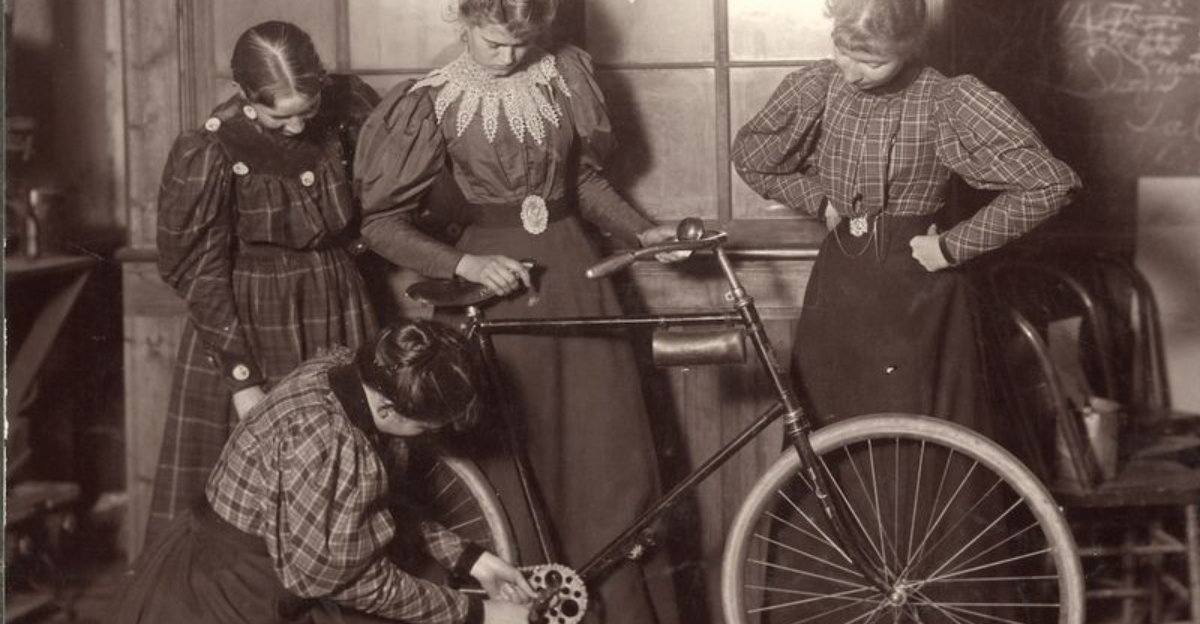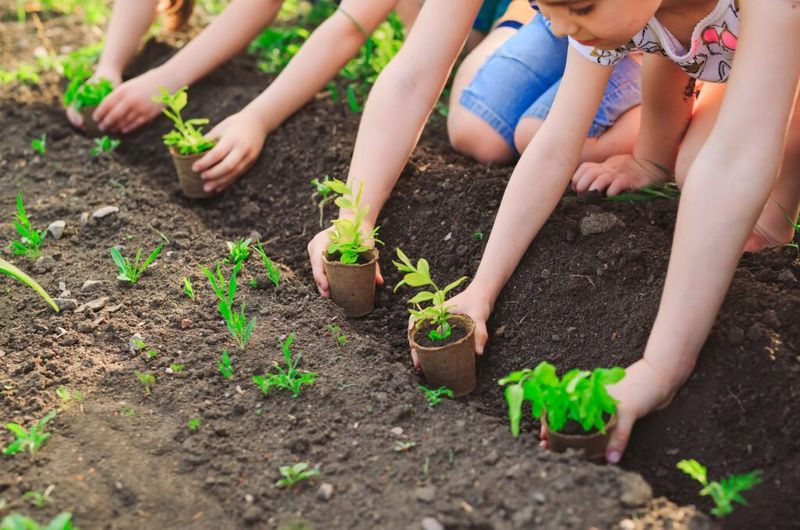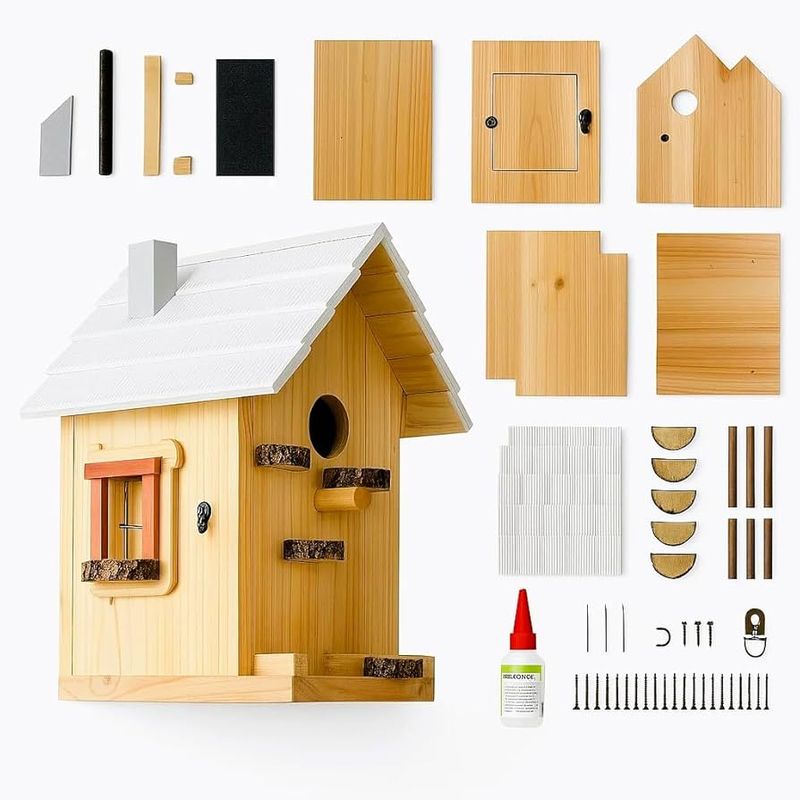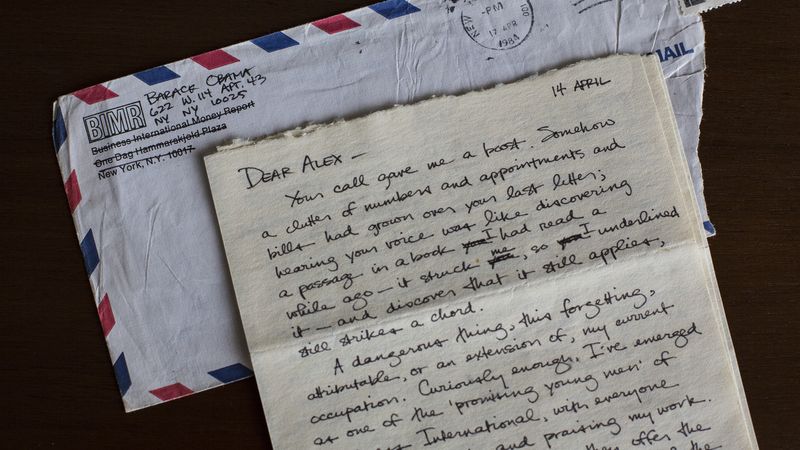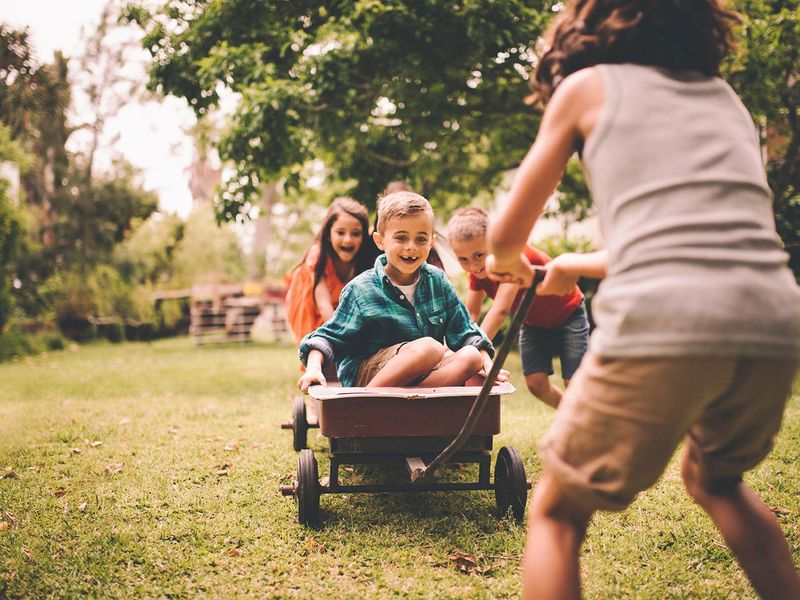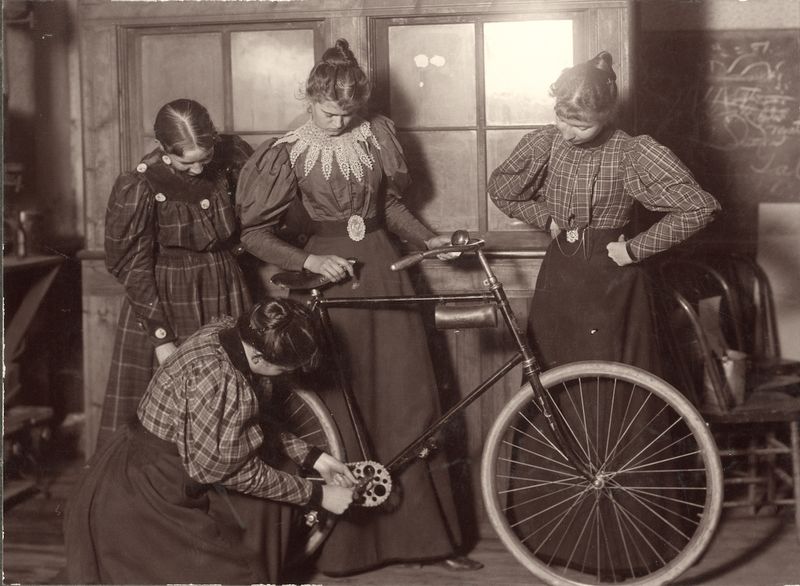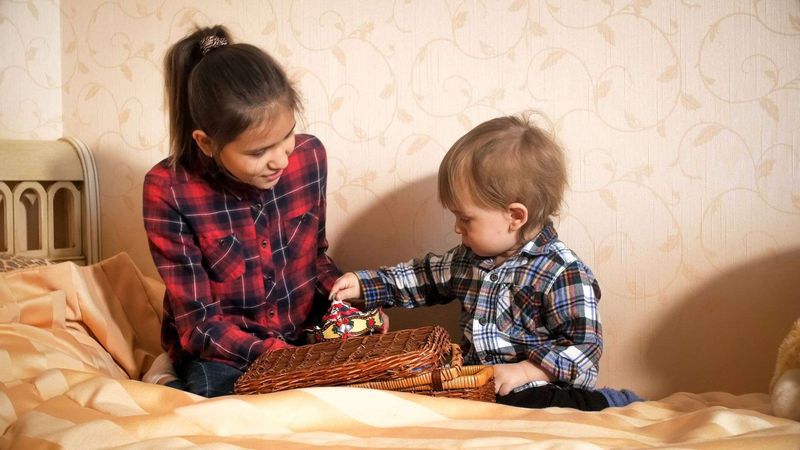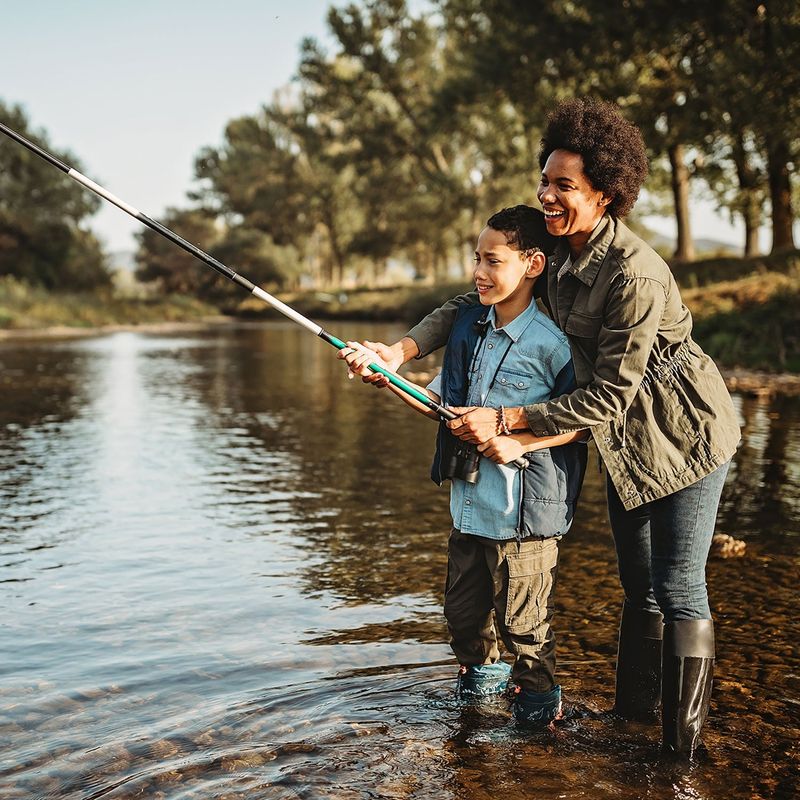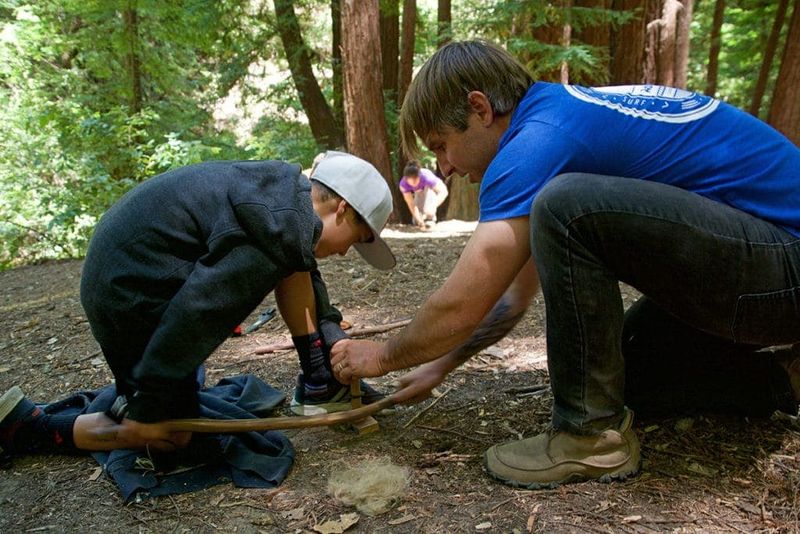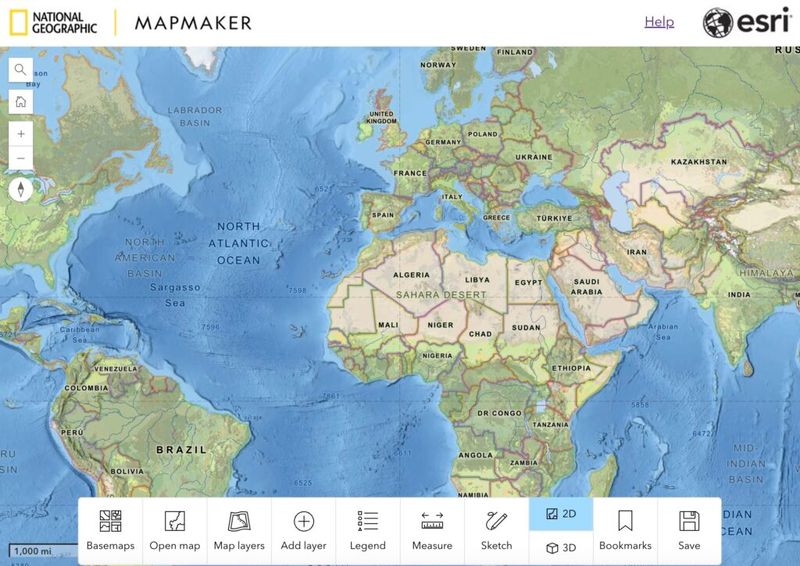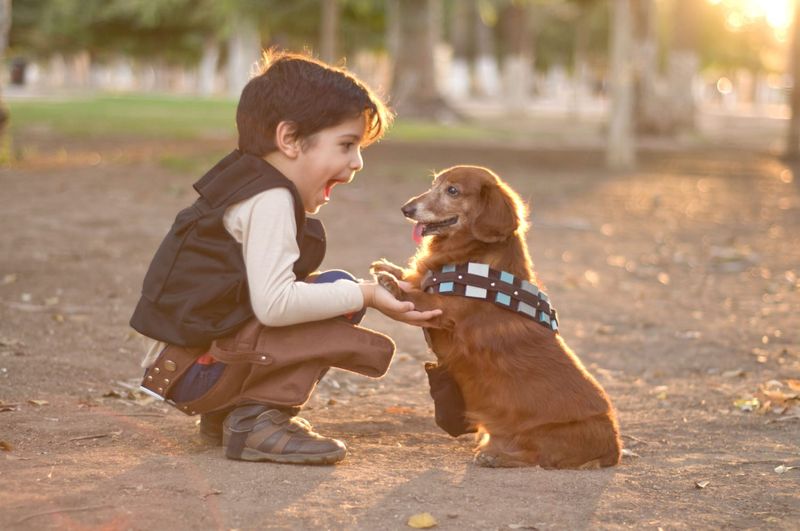In times past, children were shaped into capable adults through practical experiences and responsibilities rather than digital screens. This hands-on approach instilled values and skills that modern education often overlooks. We delve into 15 traditional methods that equipped youngsters with the tools to navigate adulthood adeptly, fostering independence, resilience, and responsibility.
1. Doing Household Chores
Household chores were more than just tasks; they were foundational lessons in responsibility. Children learned accountability by keeping their living spaces clean and organized. Washing dishes, for instance, wasn’t merely about cleanliness. It taught time management and the satisfaction of completing a task. These chores also fostered discipline and instilled the importance of contributing to a household.
In many families, chores were divided among siblings, promoting teamwork and a sense of duty. This shared responsibility cultivated a cooperative spirit and prepared kids for future communal living situations.
2. Cooking Family Meals
Cooking family meals was a rite of passage for many youngsters. This skill not only ensured they could fend for themselves but also unleashed their creativity. Preparing meals from scratch taught resourcefulness and planning. It wasn’t just about following a recipe; it was about understanding nutrition and the joy of sharing food.
As kids experimented in the kitchen, they developed confidence and a deepened appreciation for homemade dishes. The kitchen became a classroom where mistakes were delicious and learning was tasty. Moreover, this skill paved the way for healthier eating habits.
3. Gardening and Farming
Gardening and farming connected children with the earth in a profound way. Through planting seeds and nurturing their growth, kids learned patience and the cycles of nature. These activities taught sustainability and respect for the environment, crucial lessons in today’s world.
The anticipation of seeing a tiny seedling emerge fostered a sense of accomplishment and wonder. Tending to a garden required diligence, encouraging kids to be attentive and caring. This interaction with nature was both grounding and enlightening, offering a peaceful retreat from the chaos of daily life.
4. Managing Money Through Allowances
Managing money through allowances introduced kids to financial literacy early on. Receiving a regular allowance wasn’t just pocket money; it was a lesson in budgeting and saving. Children learned the value of money by deciding how to spend or save their earnings.
This responsibility encouraged thoughtful spending and the concept of delayed gratification. By managing an allowance, kids understood economic principles and prepared for adult financial responsibilities. It laid the groundwork for a lifetime of wise financial decisions, setting them up for success in personal and professional realms.
5. Woodworking and Crafting
Woodworking and crafting were more than hobbies; they were gateways to creativity and problem-solving. Building a birdhouse or crafting a piece of furniture taught kids about design, measurement, and precision. These projects demanded patience and attention to detail, essential skills for any endeavor.
Working with their hands allowed children to see tangible results from their efforts, fostering a sense of pride and accomplishment. This hands-on experience was a break from theoretical learning, offering practical insights and a deep satisfaction that comes from creating something unique.
6. Writing Letters
Writing letters was an art form that honed children’s communication skills. Putting pen to paper required thoughtfulness and clarity, as every word mattered. Corresponding with relatives and friends developed strong writing abilities and a sense of connection.
This practice cultivated patience, as kids waited eagerly for replies, learning the value of anticipation. Letter-writing encouraged self-expression and reflection, offering a personal touch that digital communication lacks. It was a cherished way to bridge distances and foster relationships, leaving lasting impressions in ink and paper.
7. Playing Outdoors Unsupervised
Playing outdoors unsupervised was a cornerstone of childhood independence. It offered kids the freedom to explore, create games, and solve conflicts without adult intervention. This unsupervised play fostered resilience and decision-making skills, essential for navigating life’s challenges.
The fresh air and open spaces stimulated creativity and physical health, providing a natural playground for young adventurers. Friendships formed in these settings were built on shared experiences and trust, creating bonds that often lasted into adulthood. It was a time of discovery and laughter, free from structured schedules.
8. Fixing and Maintaining Bicycles
Fixing and maintaining bicycles taught children mechanical skills and self-reliance. Learning to repair their own bikes gave them a sense of independence and problem-solving abilities. This hands-on activity encouraged resourcefulness as they figured out how to keep their means of transport in working order.
The sense of achievement from fixing a bike was empowering, instilling confidence in their capabilities. This skill also promoted an understanding of mechanics, which could translate to other technical pursuits. It was a practical education in resilience and adaptability, valuable traits for any adult.
9. Taking Care of Younger Siblings
Taking care of younger siblings was an early lesson in responsibility and empathy. Babysitting taught older children how to be caregivers, developing nurturing skills that extended into adulthood. It was an exercise in leadership, as they managed playtime, meals, and safety.
This role fostered patience and understanding, as older siblings learned to navigate tantrums and sibling dynamics. The experience of caring for someone younger provided insights into family dynamics and reinforced the importance of compassion. It was a rewarding responsibility that prepared them for future parenting roles.
10. Learning to Sew and Mend Clothes
Learning to sew and mend clothes was a skill that combined creativity with practicality. Children gained an appreciation for craftsmanship as they learned to repair and create garments. This activity fostered patience and precision, as sewing required careful attention to detail.
Mending clothes encouraged resourcefulness and frugality, teaching kids to make the most of what they had. The satisfaction of wearing something they made or fixed themselves was immense, boosting their confidence and sense of accomplishment. It was a lesson in sustainability, long before it became a global concern.
11. Fishing and Hunting
Fishing and hunting connected children with nature and self-sufficiency. These activities taught patience and the skills needed to procure food, fostering an understanding of the natural world. Engaging in these pastimes instilled respect for wildlife and the environment.
The thrill of the catch or the hunt was both exciting and educational, teaching kids about ecosystems and the circle of life. These experiences built resilience and the ability to navigate challenges, valuable lessons for any adult. It was a time-honored tradition that linked generations through shared outdoor experiences.
12. Camping and Survival Skills
Camping and survival skills equipped children with resilience and independence. Learning to build a fire, set up a tent, and navigate the wilderness instilled confidence and self-reliance. These skills taught kids to be resourceful and adaptable in unfamiliar environments.
The great outdoors became a classroom, offering lessons in teamwork and problem-solving as they faced challenges together. The experience of living in nature, even for a short time, fostered a deep appreciation for the environment. It was an adventure that prepared them for life’s unpredictable journeys.
13. Using Physical Maps
Using physical maps was a practical skill that enhanced orientation and critical thinking. Reading maps required attention to detail and spatial awareness, skills that are rare in today’s digital age. Kids learned to navigate unfamiliar terrain independently, boosting their confidence.
Map reading cultivated problem-solving abilities as children figured out routes and distances. This skill provided a sense of adventure, turning journeys into explorations. It was a valuable lesson in self-reliance, proving that not all answers are found in a gadget. The world was theirs to explore, one map at a time.
14. Taking Responsibility for Pets
Taking responsibility for pets taught children empathy and accountability. Caring for an animal required consistency and compassion, as kids learned to meet their pets’ needs. This role fostered a sense of duty and reliability, preparing them for future commitments.
The bond between a child and their pet was a source of joy and comfort, teaching lessons in unconditional love and companionship. This experience instilled a lifelong appreciation for animals and their well-being. It was a nurturing practice that shaped responsible and caring adults.
15. Part-Time Jobs and Entrepreneurship
Part-time jobs and entrepreneurship introduced teens to the world of work and responsibility. Earning their own money instilled a strong work ethic and time management skills. Whether it was a lemonade stand or a paper route, these ventures taught self-motivation and customer service.
Teens learned to balance work with school and other activities, preparing them for future career demands. These early jobs encouraged creativity and innovation, as they often found unique ways to earn. It was an empowering experience, fostering independence and the drive to succeed.
